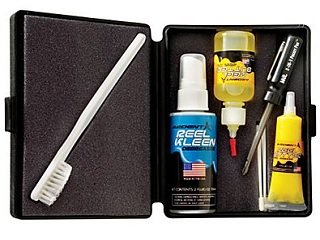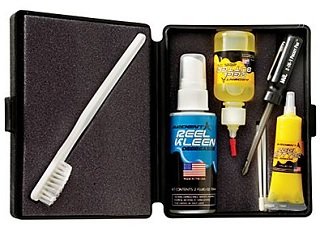 Having a reel malfunction, or completely break, while fishing can be quite frustrating, to say the least, and prove to be a time-consuming, frustrating situation. This potential, while often a small risk, is the reason many serious anglers have several extra reels in the boat when fishing. However, even one reel, especially if it’s your crankbait or topwater reel, can limit your versatility should it falter on the water. If you’re without a handful of spare reels, or if you don’t want to have to replace an expensive reel, here are a few tips for on the spot repairs if you find yourself in such a situation.
Having a reel malfunction, or completely break, while fishing can be quite frustrating, to say the least, and prove to be a time-consuming, frustrating situation. This potential, while often a small risk, is the reason many serious anglers have several extra reels in the boat when fishing. However, even one reel, especially if it’s your crankbait or topwater reel, can limit your versatility should it falter on the water. If you’re without a handful of spare reels, or if you don’t want to have to replace an expensive reel, here are a few tips for on the spot repairs if you find yourself in such a situation.
Smart anglers, or at least anglers who take good care of their equipment, will have a reel repair/first aid kit nearby. This doesn’t have to be a complicated collection of tools, but a few small screwdrivers—flathead and Philips—as well as a small crescent wrench, toothbrush (for cleaning), and a small tube of oil/grease comprise a solid kit. With these tools, you can gain access to your reel’s inner workings and even completely take it apart if you need to. Though, that may be better to do off the boat and under more stable conditions.
A common problem I see people experiencing with their reels is a sudden loss of casting distance. This can typically be solved by pulling the spool out and cleaning the spool shaft. Then, I’d recommend you add drop of oil and reattach the spool. Often, the spool shaft will build up a film of grease on it from the internal workings of the reel, which will collect on the interior of the gears and the spool shaft. This is not a permanent fix, however; your reel will need to be completely cleaned so that the gears will function properly. It will reduce much of the friction that leads to a loss of casting distance, though, and will get you back to fishing for the time being.
Aside from a noisy reel and loss of casting distance, drag issues can plague anglers, as well. If your drag becomes too weak or too tight while fishing, you’ll need to stop and work the problem out, literally. To do this, back the drag off as loose as it will go and turn the handle a few times. Then, tighten your star drag one rotation and turn the handle again. You may have to do this a couple times. Wet drags can get dry, losing their ability to work effectively, but exercising the drag washers can help get them working smoothly again. Just like with everything else, however, this is not a permanent fix and your reel should be attended to as soon as possible.
No matter what, your reel will endure a lot of wear and tear on the water. This is a good sign, though, as it means you’re getting a lot of use out of it. Through proper and regular maintenance, your equipment should perform well. If you find yourself with a fussy reel on the water, the tips outlined above can get you back to fishing in no time.








